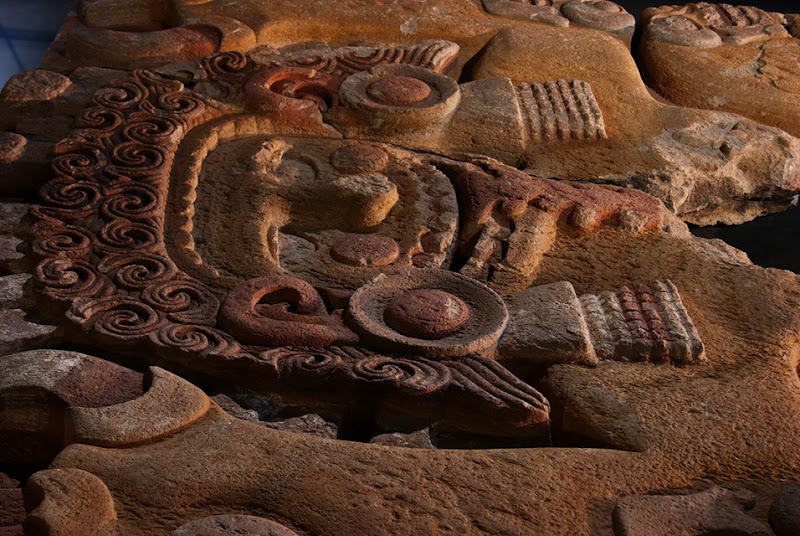
Another interactive page related to Mexican art is already on-line, the mural painting Retablo de la Independencia created by Mexican artist Juan O´Gorman.
More than 1,500 photographs of the three Mexica monumental sculptures allow appreciating the details of each element carved on the stone. These images are displayed in layers that overlap, helping users to capture colors and textures.
A zenithal image of each piece is another feature at the site that gives a perspective that would be hard to reach in the museums of Templo Mayor and National of Anthropology to the naked eye.
When one of the pieces is selected, information such as the year of creation, dimensions, date of finding and studies conducted on it displays. The button “Descripcion” shows information provided by specialists, who in 18 videos describe the importance of each piece.
Specialists that contributed in this INAH effort are archaeologists Bertina Olmedo Vera, curator of the Mexica Hall at the National Museum of Anthropology; Fernando Carrizosa Monfort, chief of the Curatorial Department at Templo Mayor Museum, and Ximena Chavez Balderas, part of the Templo Mayor Project. Restorer Maria Barajas Rocha, chief of the Restoration Department at Templo Mayor Museum, also participated.
At the Tlaltecuhtli section, users can learn about the symbolism that the monolith created between 1501 and 1521 had to Mexicas, as a terrestrial deity, as well as information of the associated offerings and the restoration processes conducted.
Regarding the Sun Stone, also known as Aztec Calendar dated approximately in 1521, an iconographic analysis is available. The great amount of carvings illustrates fundamental concepts of Mexica world view.
Finally, the image of the impressive lunar goddess Coyolxauhqui, carved between 1469 and 1481, offers an explanation of its finding, mythology, symbolism and relation with other feminine deities, as well as of the recovery of its color by restorers.
Source: Art Daily [March 27, 2011]